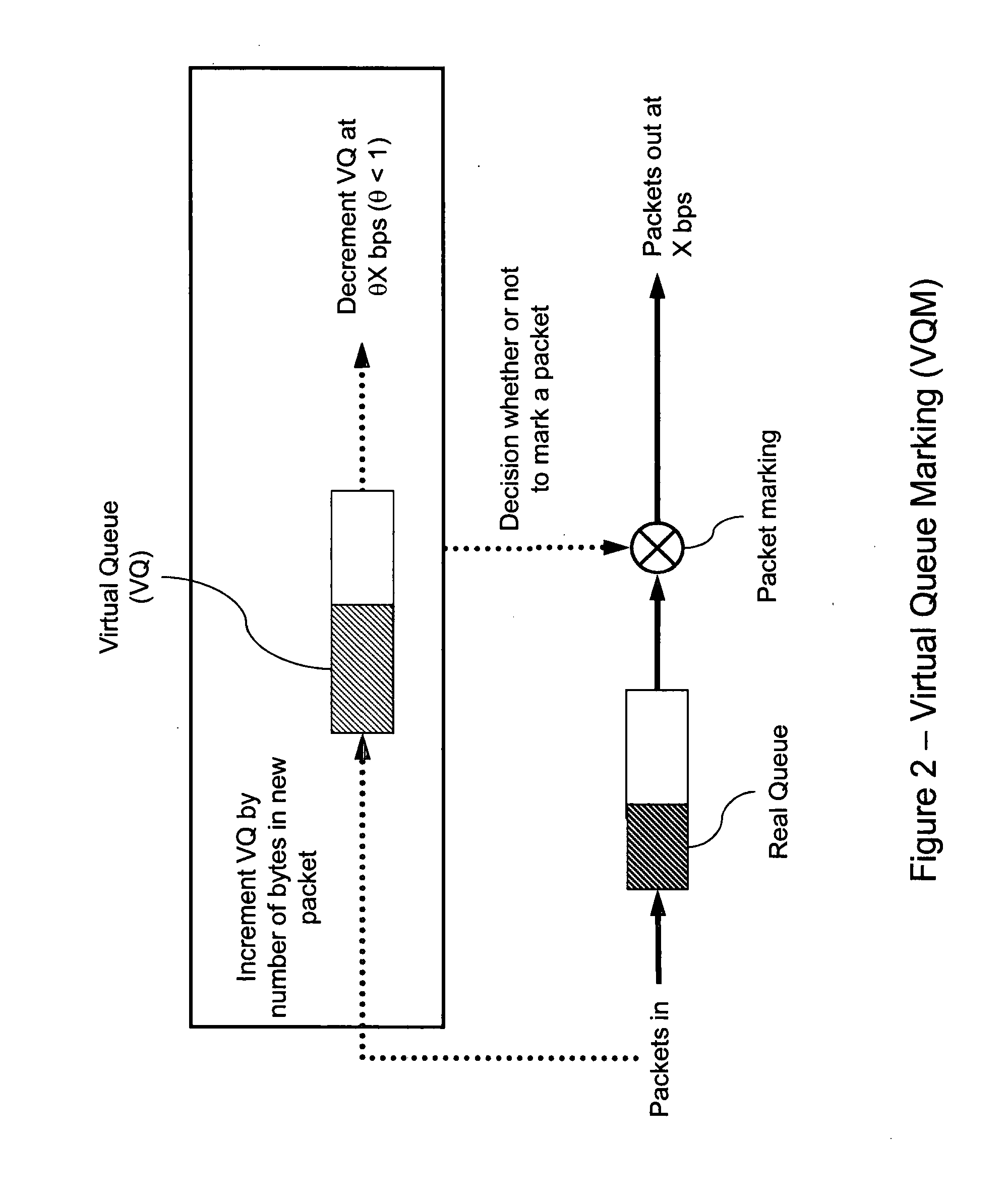Signalling congestion
a signalling and congestion technology, applied in the field of signalling congestion, can solve the problems of congestion, inconvenience to the sender or receiver of packets, and serious overloading or congestion, and achieve the effects of reducing the sending rate, indicating more quickly and accurately, and increasing the sending ra
- Summary
- Abstract
- Description
- Claims
- Application Information
AI Technical Summary
Benefits of technology
Problems solved by technology
Method used
Image
Examples
Embodiment Construction
[0058]With reference to the accompanying figures, methods and apparatus according to preferred embodiments for processing data items received at a network element in a communications network, and for signalling a measure of congestion in respect of the network element, will be described particularly with reference to FIG. 5. Firstly, however, a technique using what may be thought of as the “normal” operation of a Virtual Queue technique will be described with reference to FIGS. 3 and 4.
[0059]Referring to FIG. 3, a network element 10 such as that shown in FIG. 1 remains in a “Wait” state 30 until a packet arrives in the real queue of the network element 10 (or of an individual interface 14 thereof). It then proceeds to a “Calculation” step 32, in which the time “T” since the arrival of the previous packet is calculated. From this, the new level of the virtual queue “new_VQ_level” is obtained from the previous level of the virtual queue “previous_VQ_level” by adding an amount correspo...
PUM
 Login to View More
Login to View More Abstract
Description
Claims
Application Information
 Login to View More
Login to View More - R&D
- Intellectual Property
- Life Sciences
- Materials
- Tech Scout
- Unparalleled Data Quality
- Higher Quality Content
- 60% Fewer Hallucinations
Browse by: Latest US Patents, China's latest patents, Technical Efficacy Thesaurus, Application Domain, Technology Topic, Popular Technical Reports.
© 2025 PatSnap. All rights reserved.Legal|Privacy policy|Modern Slavery Act Transparency Statement|Sitemap|About US| Contact US: help@patsnap.com



